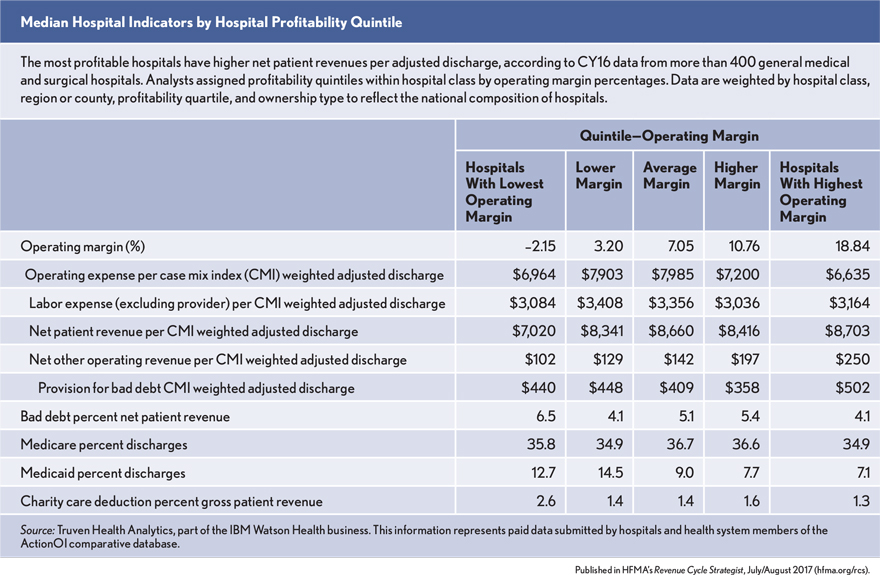Hospitals devote considerable resources to maintaining and enhancing their margins, addressing both the revenue cycle and cost control. The most profitable hospitals have higher net patient revenues per adjusted discharge, fully $1,683 (24 percent) greater than those of the lowest margin hospitals, according to research from Truven Health Analytics, part of the IBM Watson Health business, based on CY16 data from more than 400 general medical and surgical hospitals (see exhibit on page 8). The most profitable hospitals also enjoy the lowest average expenses per patient. Interestingly, the least profitable hospitals also have lower than average expenses. Because they have lower per patient revenues they are forced to cut costs to maintain positive margins.
Bad debt is lower in the highest margin hospitals, but the difference is only $62 per discharge between the highest and lowest margin hospitals. Similarly, charity care is less in the highest margin hospitals. All cohorts have a similar percentage of Medicare patients, but more profitable hospitals have fewer Medicaid patients. Combined, differences in bad debt, charity care, and Medicaid can account for only part of the patient revenue difference between high and low margin hospitals. This implies that low margin hospitals also are receiving lower payments from other sources such as commercial insurance. Given fixed patient mix and payment levels, hospitals with lower patient revenues can only strive to match the expense levels of the most successful hospitals.






